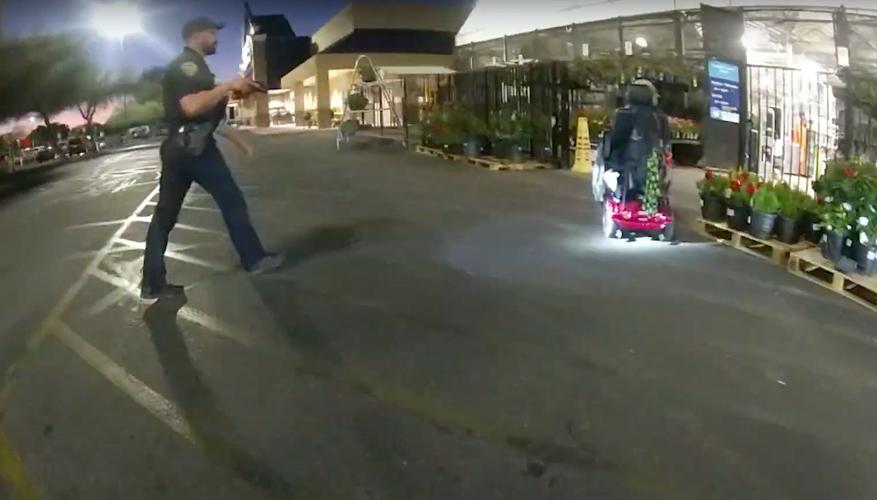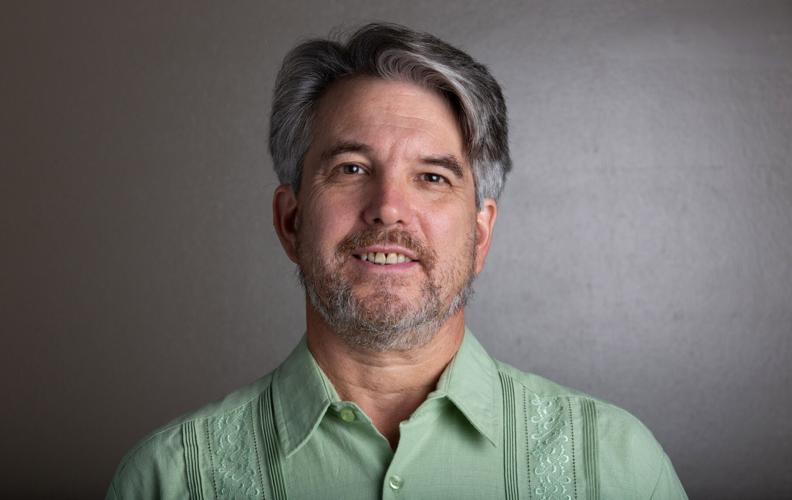Felipe Garcia broke the good news Thursday just before Tucson Mayor Regina Romero gave her State of the City speech.
Tucson has received favorable coverage in several national publications, including Condé Nast Traveler, noted Garcia, interim president and CEO of Visit Tucson. Now the city is mentioned as possibly having “The best Mexican food in the US” on the cover of the current National Geographic Traveller Food magazine, a UK-based publication.
“The world is paying attention to our community,” he said.
Yes, it is. After last week, it surely is.
Tucson Mayor Regina Romero discusses the city's progress in pandemic recovery, climate resiliency and community safety. Video courtesy of City of Tucson.
Unfortunately much of the attention right now is negative, focused on the misconduct of two Tucson police officers, one of whom shot and killed a man in an electric scooter Monday night in a Lowe’s entrance. Another took two women to the ground during a dispute Nov. 14 in a restaurant parking lot.
The videos of both incidents went viral in quick succession last week, garnering international attention. That came on top of the rising toll of homicides, now at a record 90-plus for the year, and the drip-drip-drip of attrition from the Police Department, now down to around 760 officers.
It was a hard moment to project optimism about the city. And the police conduct showed that no matter how penetrating your ideas, how eloquent your words, how strong your policies, that doesn’t guarantee strong performance.
But Garcia’s sunshiney outlook, and the optimistic take from Romero that followed, is not simply a rose-colored view of a city in a mess. It’s also a question of emphasis — the public officials are emphasizing the positive potential; we in the news media are emphasizing the existing problems.
There’s probably a good way to reconcile these points of view.
Video policy
Now, I played a role in bringing some of the current negative attention on Tucson. Before that police killing Monday, I revealed last Sunday an earlier incident of dubious use-of-force by an off-duty officer. That column went viral, probably because it included a video of Officer Robert Szelewski holding two women down in the parking lot of Culinary Dropout restaurant, for a time putting a knee on one woman’s neck.
Police Chief Chris Magnus wasn’t pleased with my effort. He issued a tweet — now disappeared, along with Magnus’ whole Twitter account — and a news release casting doubt on my account because it was contained in an “opinion column” and was, he said, incomplete. But since it was published, I’ve received the police reports and the grainy security video. They don’t change the fundamental story.
Anyway, that was Sunday. Within 48 hours, Magnus was getting out ahead of a worse story of police violence, an incident that would inevitably bring criticism on his department and negative attention to the city.
Last year, Magnus implemented a policy of releasing video and other information about killings by Tucson police within 72 hours of the occurrence. The new policy responded to criticism by people like me who felt he had withheld information about the in-custody death of Carlos Ingram-Lopez in April 2020. That 27-year old died in police custody, after police held him face down and handcuffed, though cocaine use and a heart condition also played a role in his death.
‘Progressive’ rep
It’s interesting to note there was no public outcry about Monday’s shooting death of Richard Lee Richards until Magnus made his statement and released the video Tuesday afternoon. As he cruised toward apparent U.S. Senate confirmation for the role of commissioner of Customs and Border Protection, Magnus stuck to his transparency policy and moved to fire Officer Ryan Remington.
Magnus probably had to. Watching Remington fire nine shots into Richards from behind as he cruised slowly in his scooter toward Lowe’s garden section only made viewers think of all the other ways the officer could have stopped him from harming anyone, even though Richards had a knife. It wasn’t hard to imagine.
This is, of course, part of being a progressive police department. Not the shooting, but releasing the video, firing the officer promptly and the prosecution that is probably upcoming, assuming the Pima County Attorney’s Office obtains an indictment from the criminal investigation by Tucson police.
The department’s website declares in a headline at the top of its home page that “TPD is a progressive police department.” The first sentence: “In fact, the Tucson Police Department is one of just two police departments in the largest 100 cities in the United States to have put in place all of the ‘8 Can’t Wait’ policies promoted by Campaign Zero’s Use of Force Project.”
So, the policies are there, and presumably are often followed, but it’s tragically obvious now that some officers still need to work on their de-escalation.
No guarantee
Also in a progressive mindset, Romero said in her State of the City speech Thursday that we should “Imagine Tucson as the sustainable, economically vibrant, progressive city of the future.”
It’s a powerful vision, but the potential and the reality remain far apart now. On Friday, economist George Hammond of the University of Arizona’s Eller College said in his annual economic outlook that the Tucson area has performed worst out of all Arizona’s seven measured cities — areas as small as Lake Havasu and Sierra Vista included — in our recovery from the job loss of the COVID-19 recession.
Five of the seven areas have more than recovered from the recession, but Flagstaff has only recuperated 85% of its lost jobs, and Tucson has only got back 78%. Hammond blamed our slow recovery on the concentration of hospitality jobs and our older population, both of which he said made us vulnerable to the pandemic.
So, when Romero spoke Thursday of the completed strategic plans for transportation and housing affordability, and the in-progress plans for economic development, culture, and climate, that was good, but aspirational. And when Garcia, whose job is to sell Tucson, spoke about the loving attention showered on our city, that was understandable but hopeful.
The incidents of police violence show that vision and policies aren’t enough to guarantee performance. For now, we are still underperforming as a city, especially economically and in terms of public safety.
So it’s no wonder that when the world paid attention to our city last week, it wasn’t for our Mexican food.





